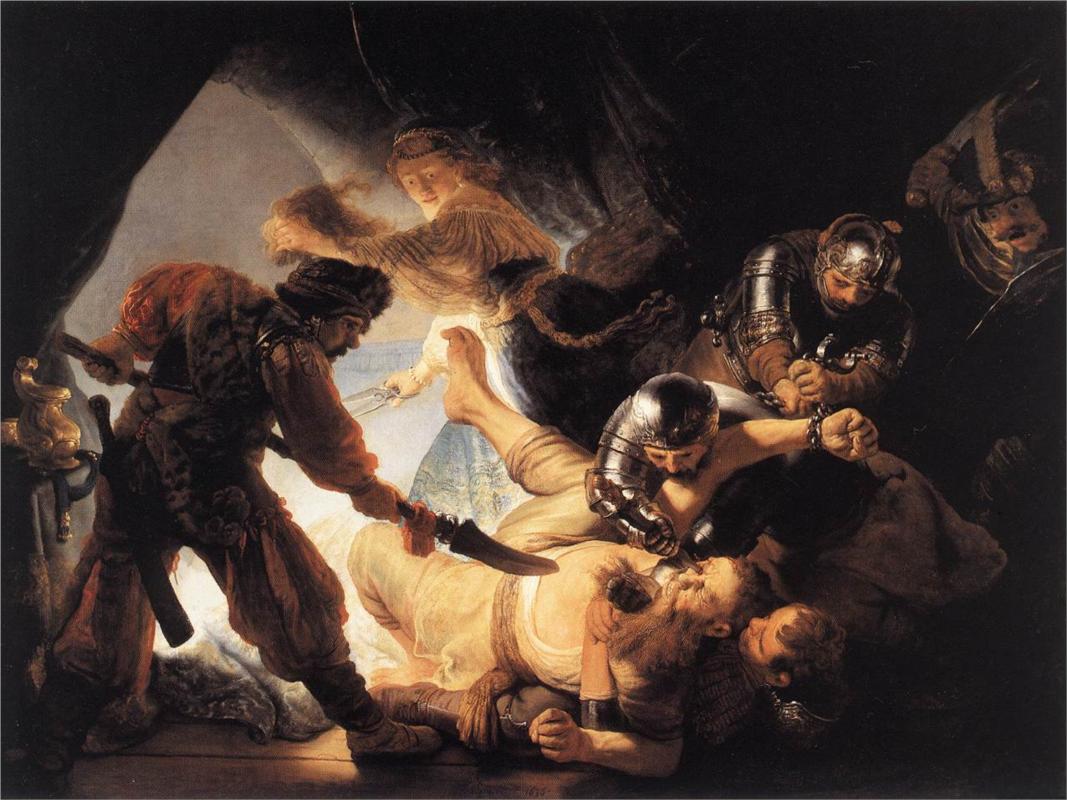| The Blinding of Samson | |
|---|---|
 |
|
| Artist | Rembrandt |
| Year | 1636 |
| Medium | Oil on canvas |
| Location | Städelsches Kunstinstitut, Frankfurt am Main, Germany |
| Dimensions | 302 x 236 cm 118.9 x 92.9 in |
| Rembrandt Famous Paintings | |
| The Night Watch | |
| The Return of the Prodigal Son | |
| Self-Portrait | |
| The Jewish Bride | |
| Danaë | |
| The Mill | |
| The Storm on the Sea of Galilee | |
| The Blinding of Samson | |
| The Three Trees |
The Blinding of Samson is a painting by the 17th-century Dutch master, Rembrandt, and was produced in 1636. It depicts a Biblical scene, with Samson, having been tricked by Delilah, seized by the Philistines, who forced him to the ground and gouge out his eyes. The painting is one of relatively few to show this scene in detail and is particularly noted because of Rembrandt’s masterful command of light and shade.
Artistic Features
Like other Baroque artists, Rembrandt made use of chiaroscuro (contrasting patterns of light and dark) in order to emphasize certain parts of the scene. In this work, he added a three-dimensional effect by making light reflect off the armor of the attendant soldier. This gives a more realistic, rounded feel to the scene, while still allowing Samson’s suffering to remain at the center of the viewer’s attention. The painting does not shy away from the brutality of the scene: the eye being gouged out is shown flowing with blood, and Samson’s agony is very visible.